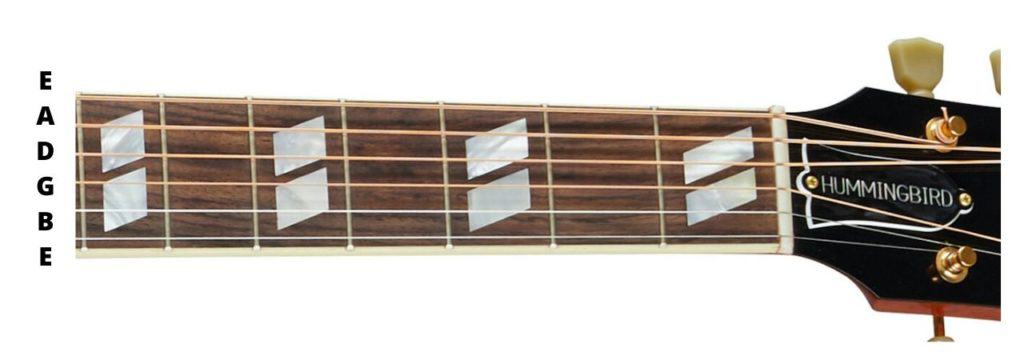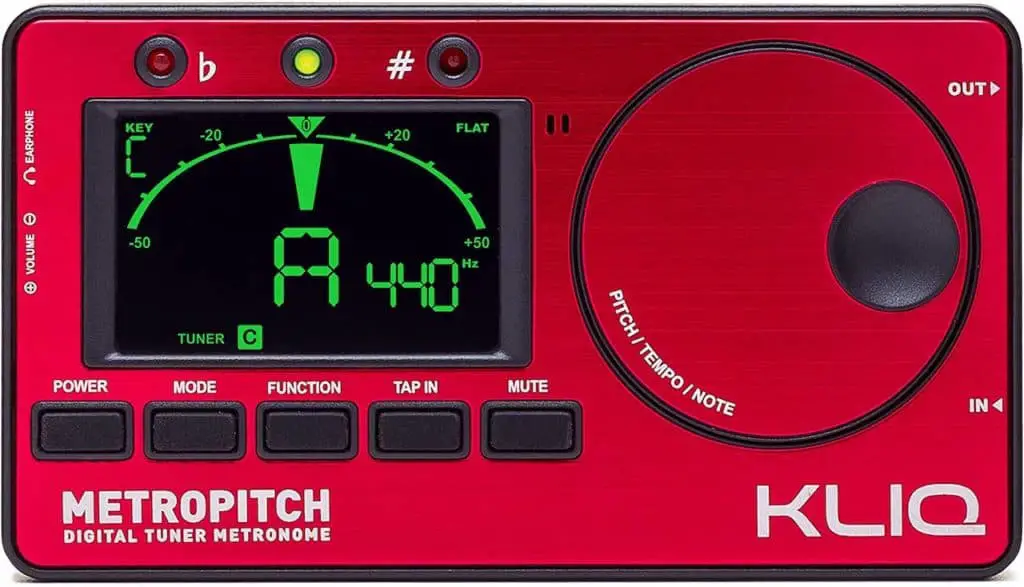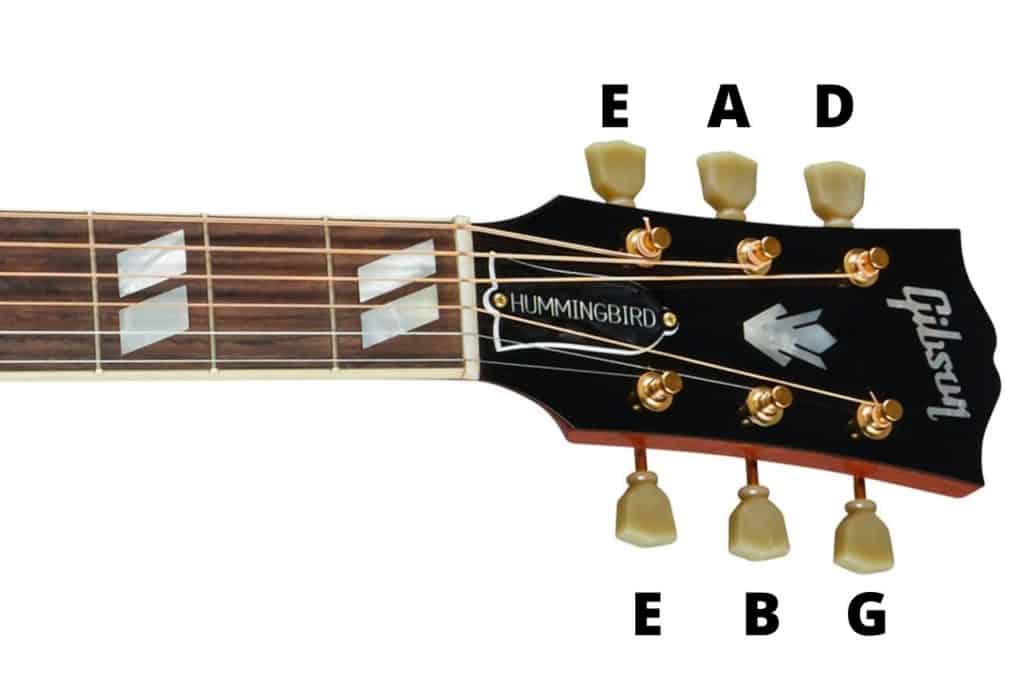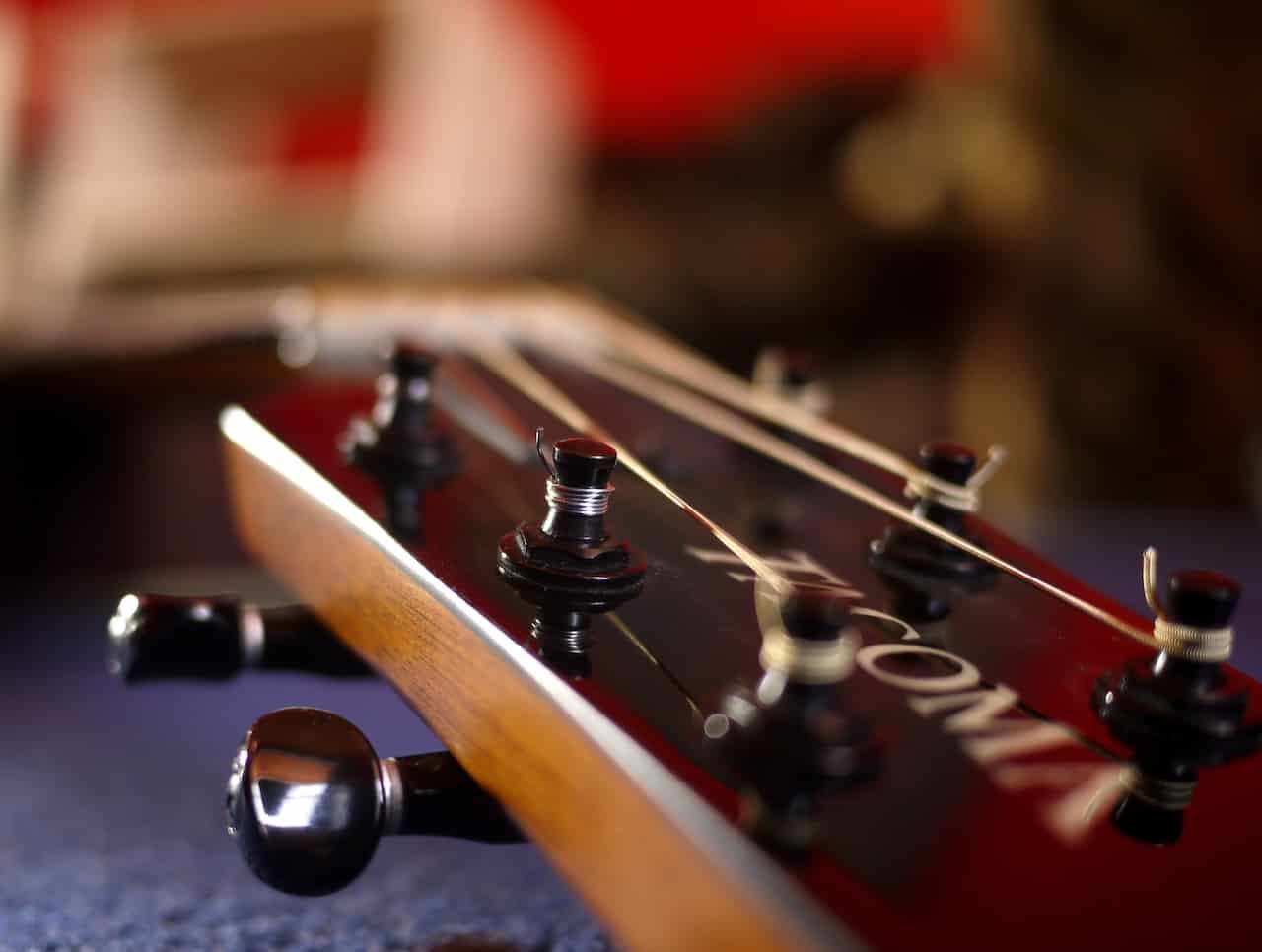Tuning your guitar can be a tricky task, especially if you are a beginner. Tuning a guitar with a tuner is straight forward, as long as you have sufficient knowledge of the basics. Any new task may require a bit of learning to get started. Tuning a guitar is no different. This article will walk you through the basics of tuning and arm you with the important knowledge you need for how to tune a guitar with a tuner.
Standard Tuning
Most guitars are tuned to Standard Tuning. This tuning system offers reasonably simple fingerings for all major/minor chords and scales. In this tuning system, the top string, or the thickest, will be low E. The bottom string, the thinnest, will be high E. The strings from top to bottom are labeled E – A – D – G – B – E. Some beginner materials will label the strings with numbers. However, this is dependant upon the learning materials. Most commonly, the strings are labeled 1 – 6, high E being number 1, and the low E being number 6. There are many learning materials available online or in-person at your local music store. Check out Guitar Tricks online for some great tips and tricks for getting started learning and tuning your guitar.

The guitar is tuned with specific intervals between each set of strings. A combination of perfect fourths and one major third is used. This tuning technique comes from the guitar’s ancestor, or forefather instrument, the viola da gamba. All but one set of strings has the interval of a perfect fourth between them. Are you unsure what a perfect fourth sounds like? Hum the beginning of the song “Here Comes the Bride.” You’ve just sung a perfect fourth! The interval between the G and B is a major third. This interval is easily remembered by the first two notes of the song “When the Saints Go Marching In.” You will be required to learn more about intervals when learning how to tune your guitar by ear alone. For now, don’t worry too much about intervals. At this time, we will focus on tuning with a tuner.
What Is An Electric Tuner?
An electric tuner is a device that determines and shows the pitch of a musical instrument or voice. Pitch is defined as the “highness or lowness of a note, which is typically measured in Hertz.” The simplest tuners are programmed to recognize a single pitch, either A or E. Some are programmed to specifically recognize standard tuning. More sophisticated tuners, called chromatic tuners, can detect and tune all twelve pitches in a chromatic scale. This pitch detection happens using either a microphone or a vibration sensor. A microphone tuner can be used for a variety of instruments. Vibration tuners are more limited in which instruments can use them. Both are effective ways of tuning.

If you have a quiet environment to tune in, a microphone tuner will work well for you. If you are working in a noisy environment, then a clip-on vibration tuner would be the better choice for you. There are many tuner apps available for cellphones or laptops. If you are simply practicing at home, an app tuner would be a fine choice for you. The accuracy, however, is not always guaranteed. An electric tuner can be purchased online for a minimal price. And a quality tuner can be found for under twenty dollars. Consider which type would best suit your needs before making a purchase.
Tuning Your Guitar With A Tuner
Now that you have your tuner, let’s get started. If you have opted for a clip-on tuner, make sure it is positioned on the headstock of the guitar, the topmost part with the machine heads, or tuning keys. You will begin by plucking only one string at a time. Each one must be tuned individually. You can use your fingers or a pick to pluck the strings. A pick may elicit a more crisp sound from the string.

The display on your tuner should show a letter name for a note, and a scale. Sometimes the scale will have a needle or a colored display to show the accuracy of the pitch being played. Your task is to adjust the string until it matches the note on the scale exactly. This may take several adjustments. You will always want to tune-up to a pitch. By tuning-up, you are tightening the strings, making sure they are nice and taut while playing. If a string happens to be sharp, simply loosen the string significantly and then tune-up from this looser position.
Now you have tuned your first string, continue to tune the rest, making your way from top to bottom. Pluck the string repeatedly and adjust the appropriate machine head. Do this for every string, carefully watching your tuner the entire time. Once you have finished, go back to the top string and tune them all a second time. This is important to ensure no strings have fallen out of tune while you were tuning the others. It is possible to mess up the tuning of other strings if you aren’t completely sure about which machine head belongs to which string.
Strings can fall out of tune for a variety of reasons. Warm or cold weather conditions can cause the strings to expand and contract. Humidity and dryness similarly affect the strings. Age is also an important factor in the tuning of strings. As they age, they become brittle and are harder to keep in tune. Be sure to watch for rust at the top and bottom of your strings. This is a clear sign that your strings may need replacing. It is important to tune your guitar before playing or practicing. Keeping your guitar tuned benefits both you and your guitar. Your ears will gradually become trained to hear pitch differences, and your guitar will hold its tuning better if it is played daily. Now, go tune your guitar, and don’t forget to practice!



